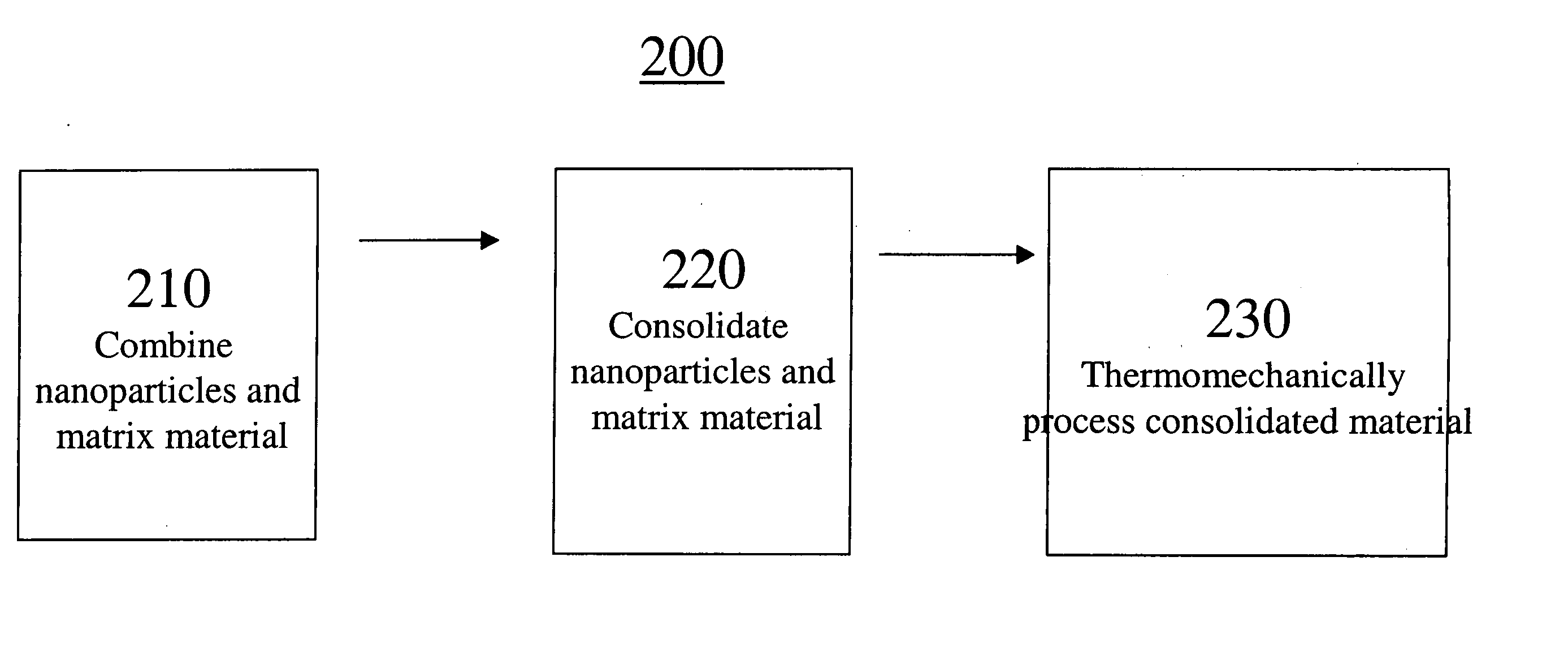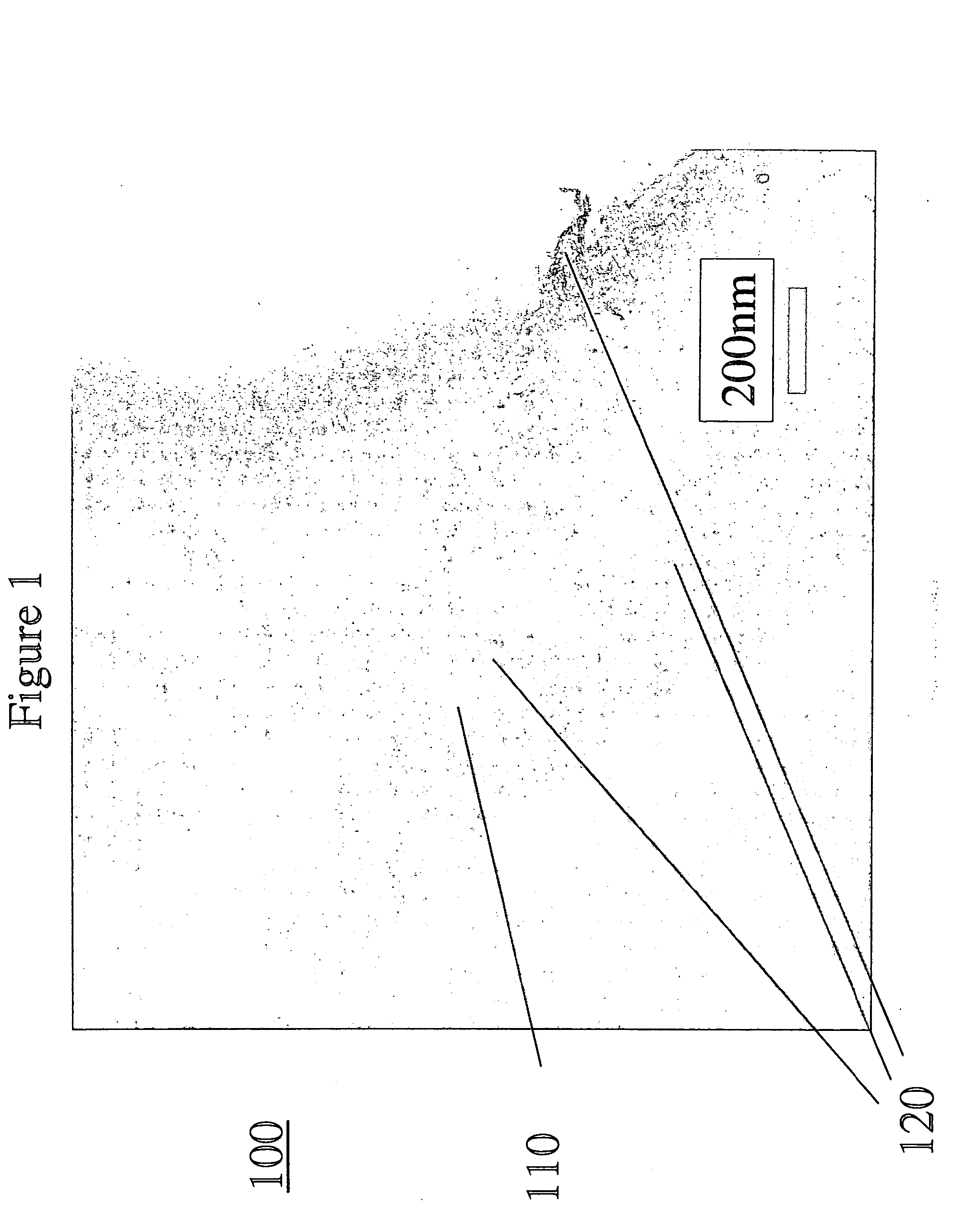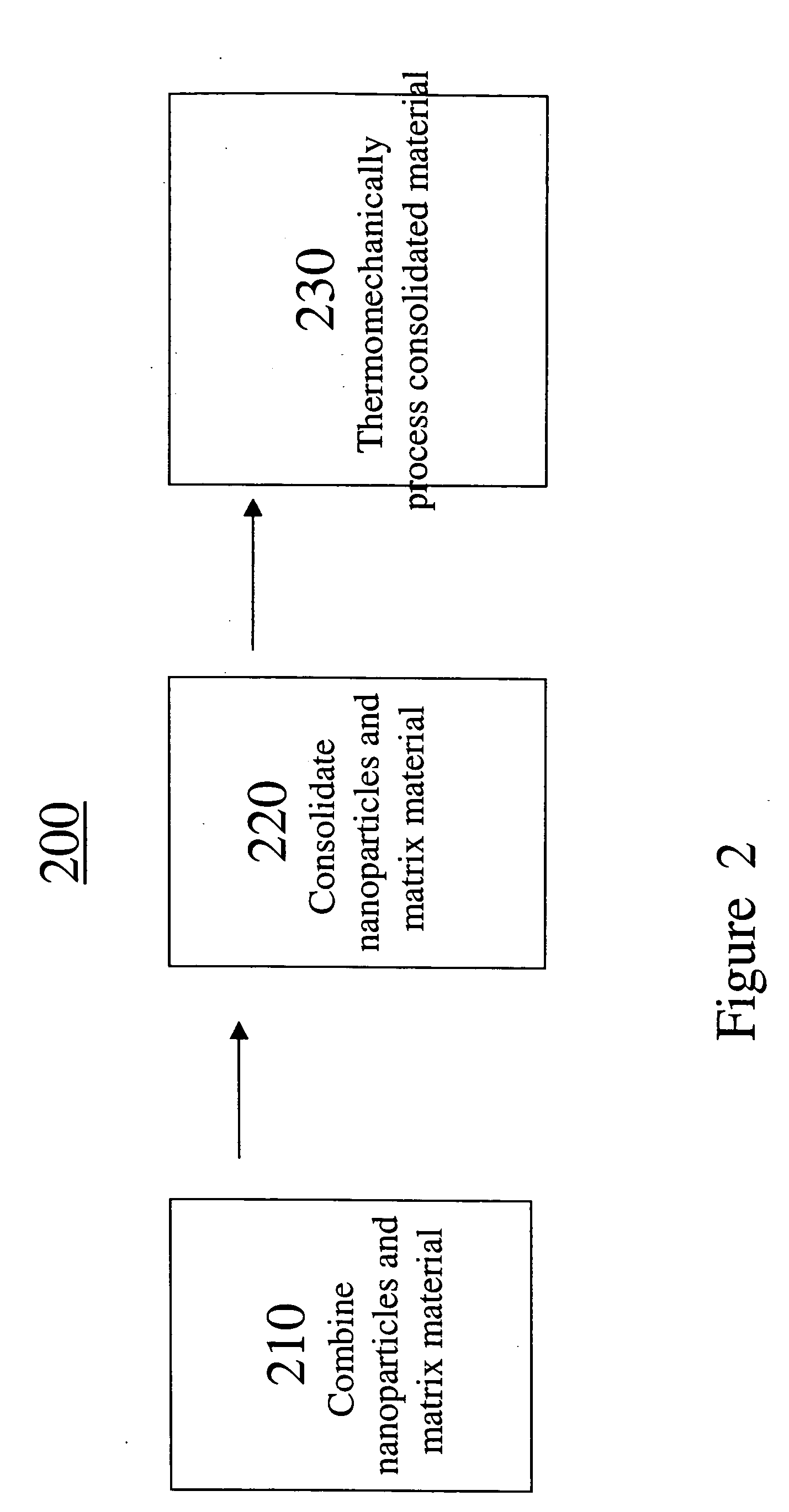Metallic alloy nanocomposite for high-temperature structural components and methods of making
a technology of nanocomposite and alloy, which is applied in the direction of metal-working apparatus, transportation and packaging, etc., can solve the problems of inability process failure to produce a homogeneous distribution of particles in the alloy matrix, and the loading of particles in the alloy composite produced by this process is typically limited to less than 2%, so as to achieve a higher volume fraction
- Summary
- Abstract
- Description
- Claims
- Application Information
AI Technical Summary
Benefits of technology
Problems solved by technology
Method used
Image
Examples
example 1
[0031] For the purpose of this example, the alloys Ni-20Cr and Fe-12.5Cr were selected as the nickel-based and iron-based matrix alloy materials, respectively, for the nanocomposite, and yttrium oxide (Y2O3) was selected as the reinforcing dispersoid nanoparticle.
[0032] Prototype nickel-based and iron-based metallic alloy nanocomposites were fabricated by first forming nanocomposite powders by blending −325 mesh (44 micron) of either nickel-based (Ni-20 weight percent Cr) or iron-based (Fe-12.5 weight percent Cr) alloy powder with various volume fractions (ranging from 5 to 10 volume percent) of size yttrium oxide nanopowders (particle sizes ranging from 50-100 nm). The nanocomposite powders were formed using mechanofusion, in which the yttrium oxide powder was mechanically fused or embedded into the metal powder surface. As an alternative to blending, other procedures, such as cryomilling or mechanical alloying, can be employed to make the nanocomposite powder. The nanocomposite p...
PUM
| Property | Measurement | Unit |
|---|---|---|
| Temperature | aaaaa | aaaaa |
| Percent by volume | aaaaa | aaaaa |
| Percent by volume | aaaaa | aaaaa |
Abstract
Description
Claims
Application Information
 Login to View More
Login to View More - R&D
- Intellectual Property
- Life Sciences
- Materials
- Tech Scout
- Unparalleled Data Quality
- Higher Quality Content
- 60% Fewer Hallucinations
Browse by: Latest US Patents, China's latest patents, Technical Efficacy Thesaurus, Application Domain, Technology Topic, Popular Technical Reports.
© 2025 PatSnap. All rights reserved.Legal|Privacy policy|Modern Slavery Act Transparency Statement|Sitemap|About US| Contact US: help@patsnap.com



